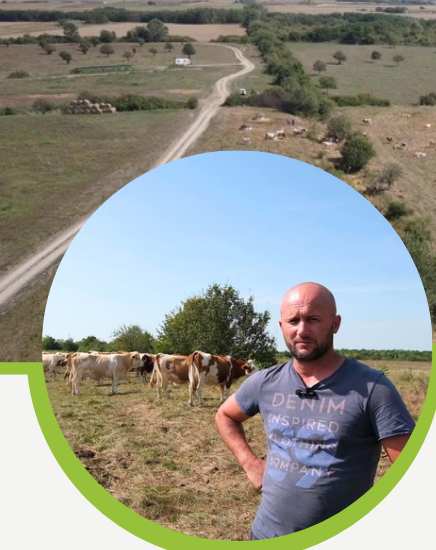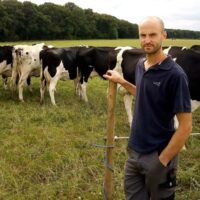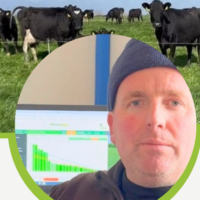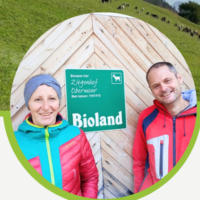Innovative Rotational Management System in Mixed Dairy and Meat Farm
Sebastian VAIDA – Improvement of grassland management
PDF Practice abstract (english)
Description
Practice abstract
In the context of the labor shortage in agriculture and the increase in land prices, farmer Vaida Sebastian has decided to address the challenges in pasture management (optimizing space, improving feed quality and ensuring nutrition throughout the year) by using an innovative rotational management system implemented in a mixed dairy and meat farm. Vaida family manages 150 cows, of which 35 heads of the Romanian Bălțată breed for milk production, 55 Aberdeen Angus heads are for reproduction and the other 60 are for meat production
The innovation involves dividing the pastureland (150 hectares) into distinct pastures for each breed, further divided into four rotational plots each one. Cows graze on each plot for around 10 days, followed by rotation. In the meantime, the other plots are mowed and after four weeks cows can graze again on that plot. After the cows are removed from one plot all grass which was refused by animals is mowed. Additionally, hay bales are strategically placed on pastures throughout the grazing season to compensate for possible lack of grass during dry summers. With the right equipment the farmer, which the farmer does not own at the moment, can preserve the mowed grass as silage or haylage (bales) instead of hay. Every year an area of 10-15 hectares is reseeded. For dairy cows, a mix is used with 12% clover, the rest perennials (ryegrass, festulolium, fescue, timothy), and for beef cows the mix contains 20% alfalfa and perennials (ryegrass, festulolium, fescue, timothy).. The reseeding strategy led to improved forage quality, positively impacting milk production in dairy cows and meat yield in Aberdeen Angus.
If used on seminatural pastures, the combined grazing – mowing system would have a beneficial effect on vegetation by removing biomass not consumed by animals. This favors the regeneration of species through the access to light of both tall and short ones, resulting in a positive effect on biodiversity.
The innovation can be adopted by farmers with mixed dairy and meat operations seeking to optimize pasture use, improve animal nutrition, offering tangible benefits in workload reduction and enhance productivity and overall farm sustainability. Contexts favoring adoption include a commitment to rotational management, availability of suitable land for reseeding, and focus on threats such as changing environmental conditions.
Context profil
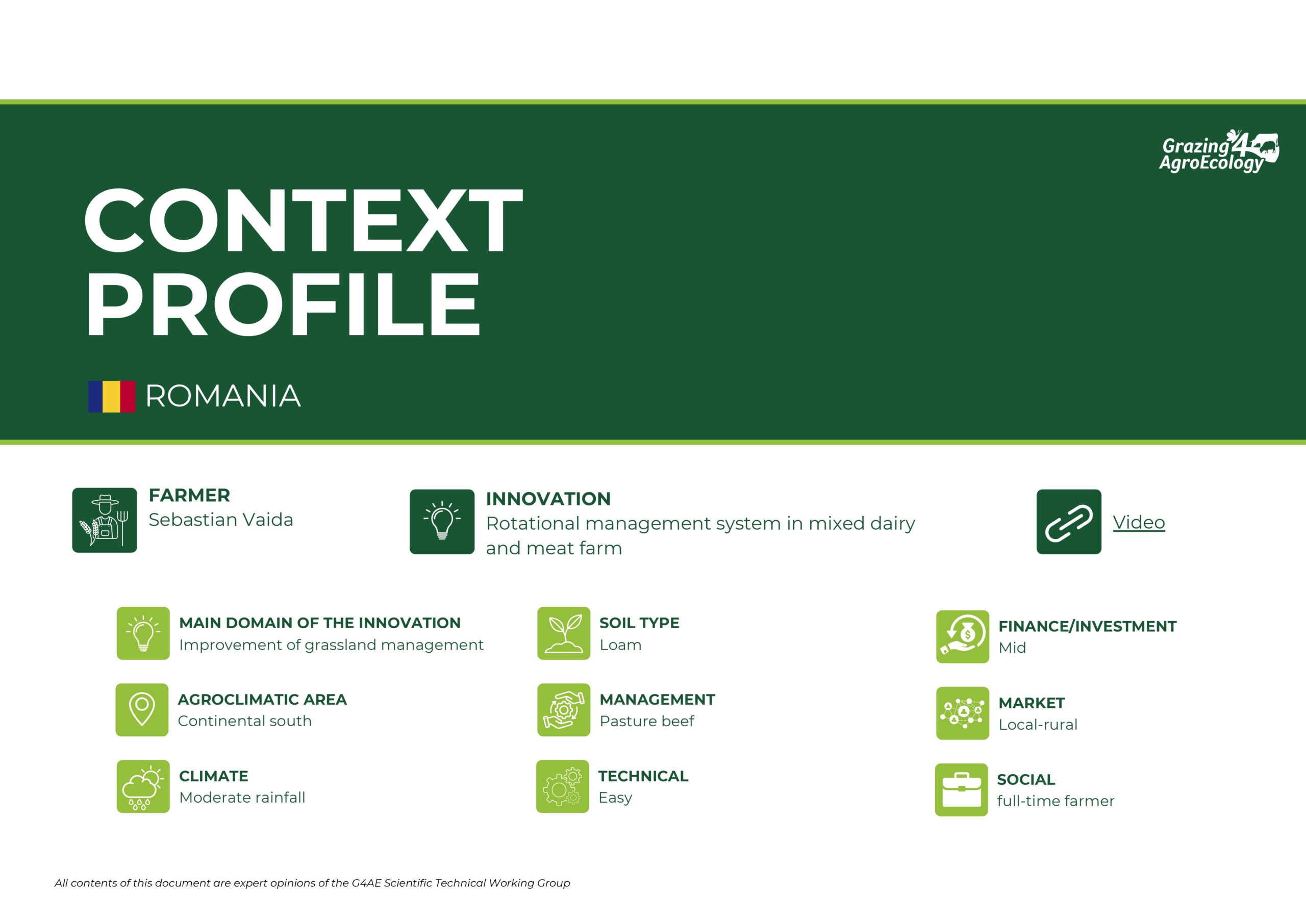
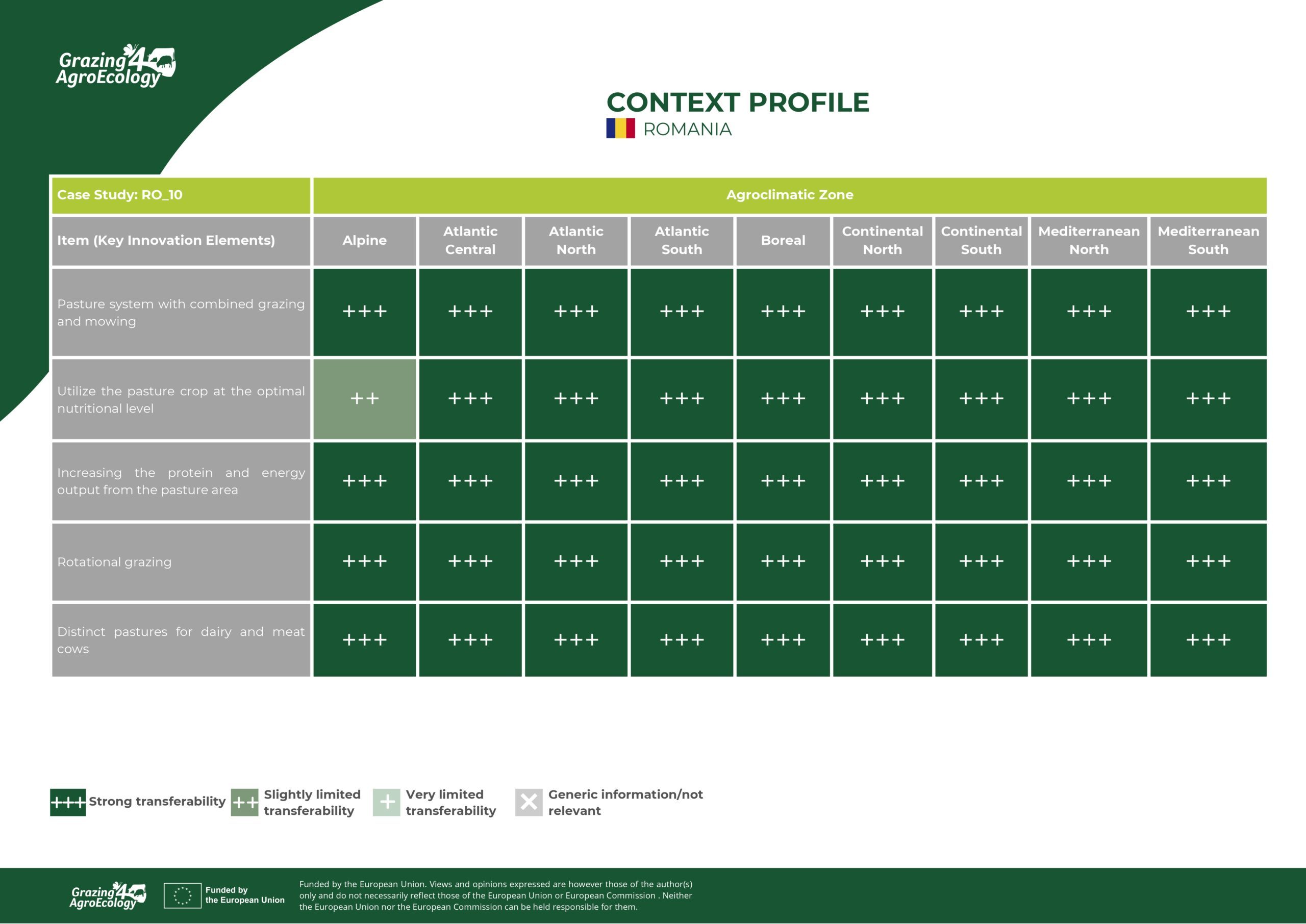
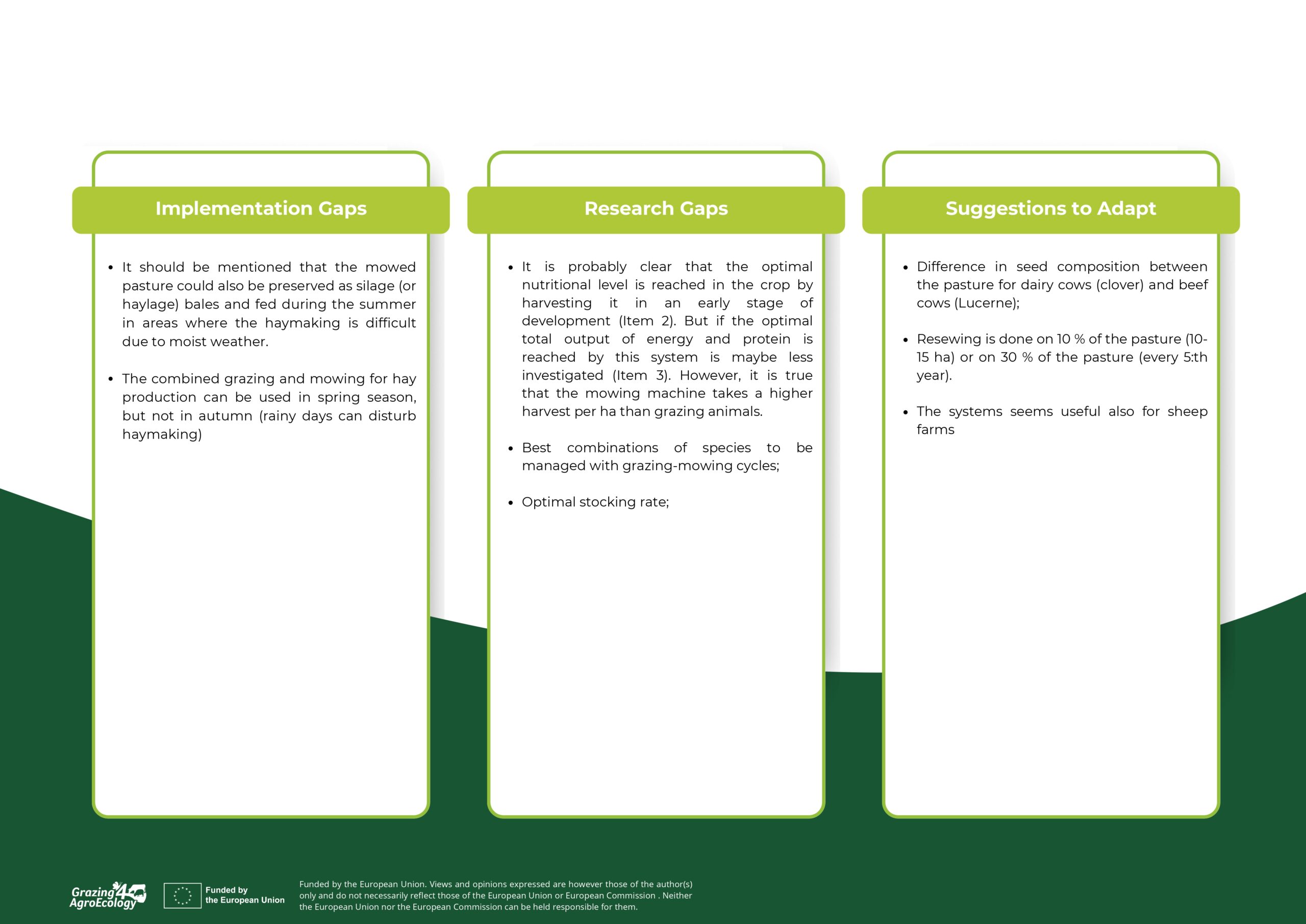
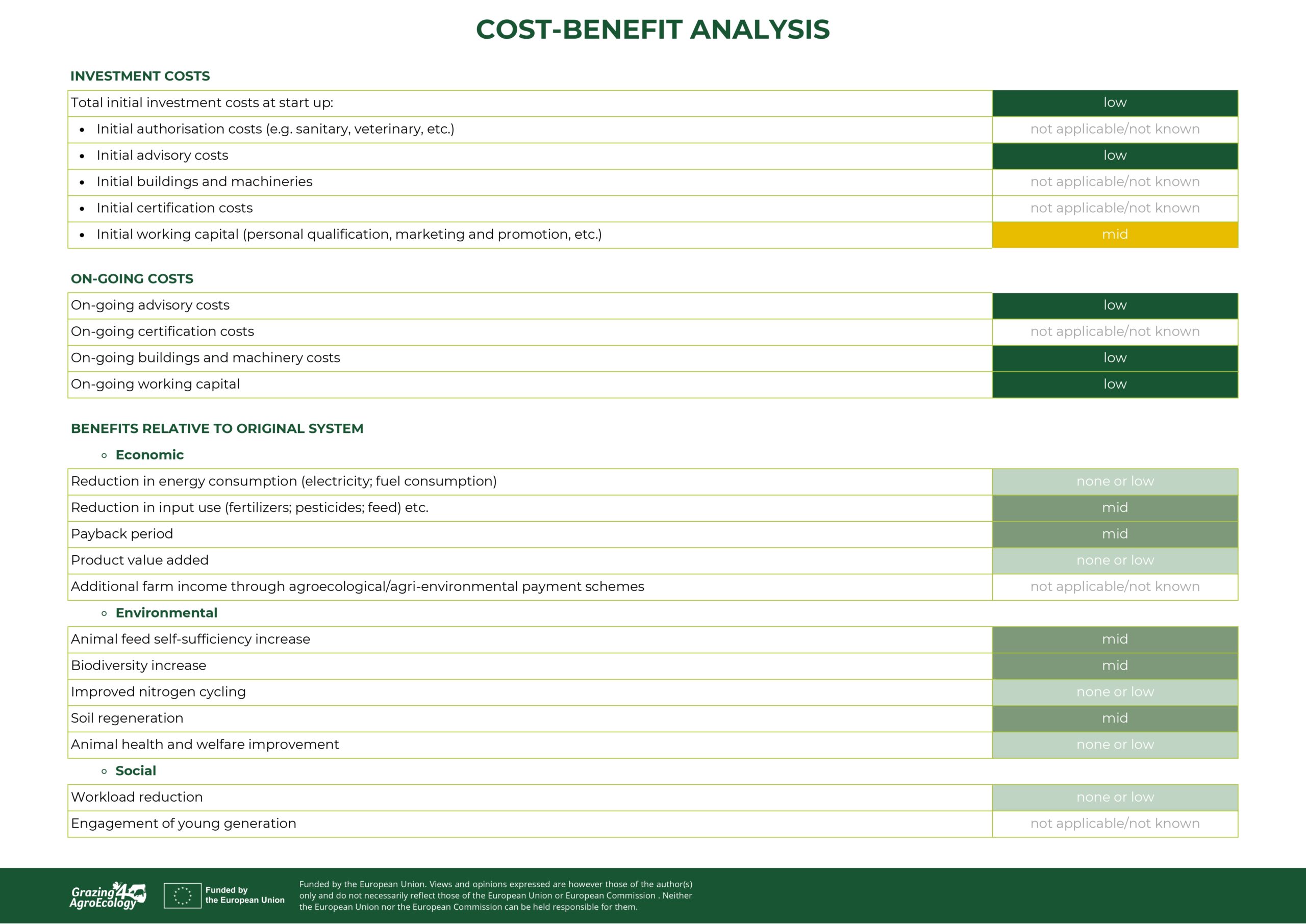
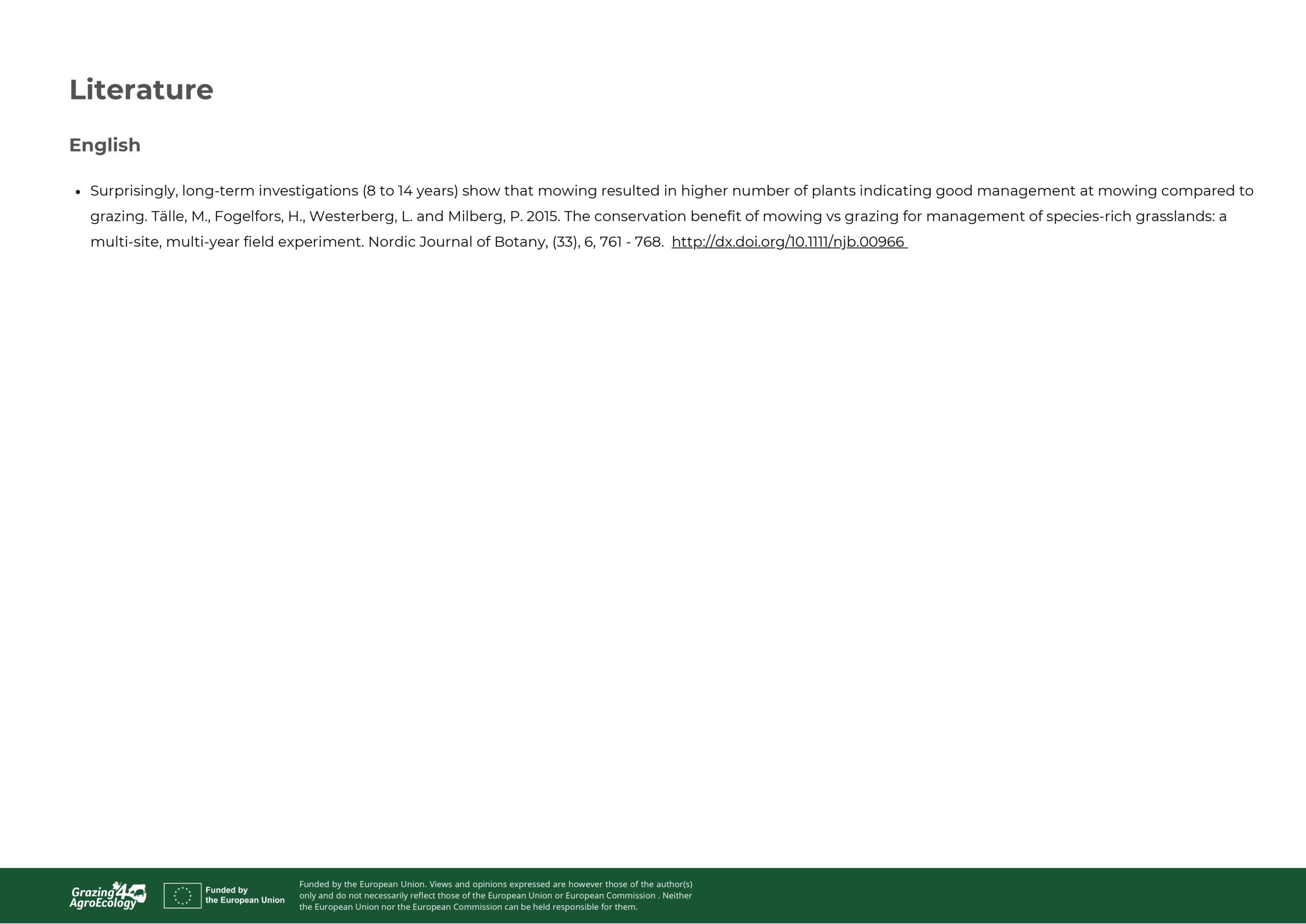
Additional information
| Main domain of innovation | |
|---|---|
| Agroclimatic area | |
| Climate | |
| Soil Type | |
| Management | Pasture beef |
| Technical | Easy |
| Finance/investment | Mid |
| Market | Local-rural |
| Social | Full-time farmer |
